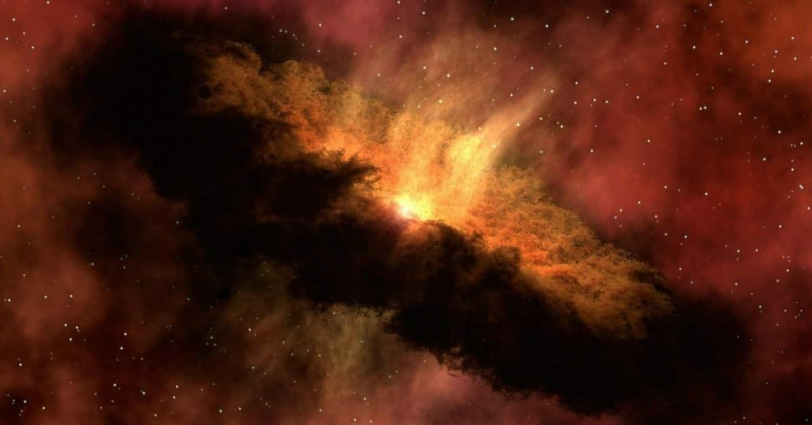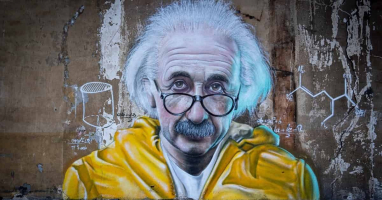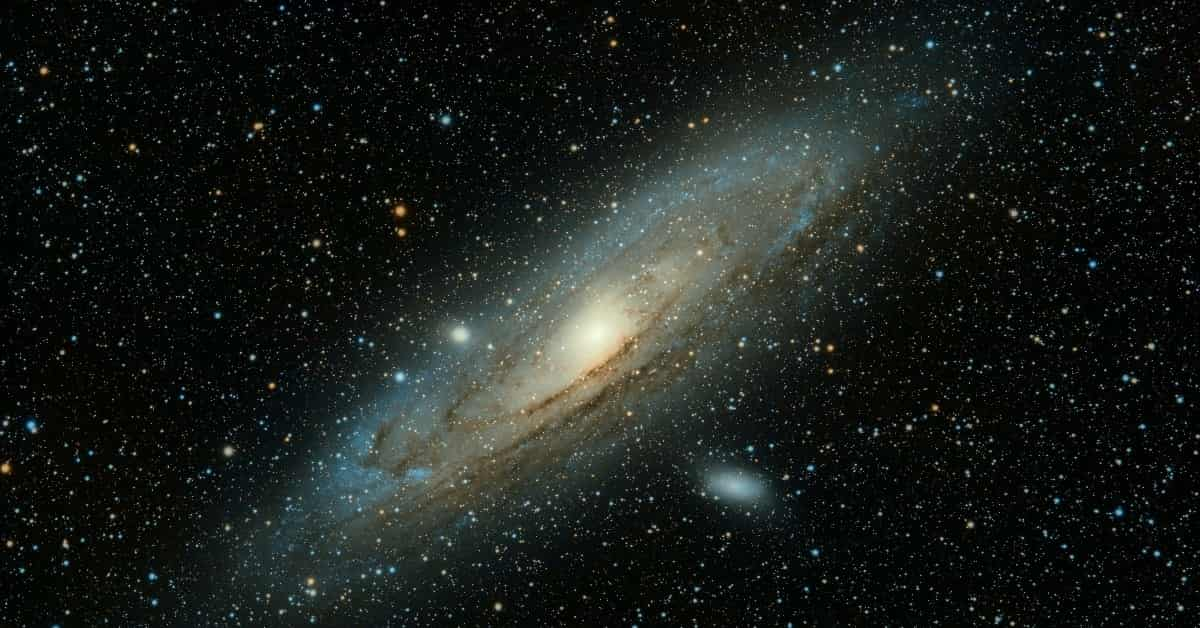I wrote this article in Japanese and translated it into English using ChatGPT. I also used ChatGPT to create the English article title. I did my best to correct any translation mistakes, but please let me know if you find any errors. By the way, I did not use ChatGPT when writing the Japanese article. The entire article was written from scratch by me, Saikawa Goto.
Introduction
Movies and books covered in this article

Three takeaways from this article
- The “beginning of the universe” was thought to be beyond science’s ability to handle.
- Einstein’s Theory of Relativity greatly changed our understanding of the universe.
- The “Big Bang model” was a “heretical” hypothesis that survived despite continuous criticism.
Self-introduction article


Published Kindle books(Free on Kindle Unlimited)
“The genius Einstein: An easy-to-understand book about interesting science advances that is not too simple based on his life and discoveries: Theory of Relativity, Cosmology and Quantum Theory”
“Why is “lack of imagination” called “communication skills”?: Japanese-specific”negative” communication”
The quotes in the article were translated using ChatGPT from Japanese books, and are not direct quotes from the foreign language original books, even if they exist.
A Single Book that Portrays “the Outlook on the Universe” Spanning Several Centuries
I have Not Read Any Works that Depict the “the Outlook on the Universe” on Such a Scale as This

This book is about the theme of “the universe.” However, the universe is a topic that is too vast.

For example, in this book, it ultimately leads to the theory of the “Big Bang,” which is currently believed to be the correct “beginning of the universe.” Even if we just focus on the “Big Bang,” there are various debates among scientists, surprising discoveries, and a dramatic story of gradually gaining support from opponents who were once in the majority.

And since ancient times, humans have viewed the “universe” in various ways. In ancient times, it was once thought that “the earth is on top of the turtle.” There’s also Galileo’s saying, “And yet it moves.” There was a time when it was thought that “the universe has no beginning and no end, and that it is an eternal, unchanging entity.”
Normally, the book would be organized so that only the outlook on the universe of each period would be cut out and summarized in a single volume, or if the book were to cover the whole, the individual descriptions would be thin, like a miscellaneous book.
However, in this book, Simon Singh attempts a challenging task of describing the evolution of human’s perception of the universe from ancient times to the present day in a comprehensive and detailed manner. I think that’s what makes this book so remarkable.


If you don’t have much basic knowledge about how humans have understood the universe, it’s a good idea to start by reading this book. The descriptions in this book are so detailed that you can be satisfied with just them, but if you find an area you want to know more about, you can read works that focus on that.
This book is not only a science book and a history book, but also a story of humanity reflected in the mirror of the “universe”.

The Beginning of the Universe was Not Thought to be in the Realm of Science
Currently, scientists believe that they can uncover “how the universe began” using the power of science. In fact, I have read the hypothesis and the struggles of scientists leading up to it, which explains how the universe began from absolutely nothing, using the knowledge of quantum mechanics, and I was surprised by the forefront of research (for more information, read the article below).

However, scientists used to think that the beginning of the universe is not the domain of science. Perhaps some scientists would have thought that it was not the domain of science by associating it with something religious, such as the Christian book of Genesis (especially as one goes back in time, the more such scientists should increase). However, even without associating it with something religious, I think I can somehow understand the feeling that make them feel “Science can’t figure it out.”
However, the history of science has been a history of overcoming the impossible.
For example, there was a time when scientists thought like this in their process of trying to understand the “universe”:
Human beings cannot know the components and properties of stars.

This, too, would be a matter that you feel that “it’s probably right.” It is natural to think that if we want to understand stars and other celestial objects, we must actually go there to collect and observe the materials. However, we now understand even things like “Black Holes,” celestial bodies that are fundamentally impossible to approach. Through our research on “light,” humanity has been able to understand things in areas we can’t reach on our own.


Also, in the past, people used to believe that the earth and the heavens (meaning “the universe”) were governed by different physical laws. They even believed that “there were rules that applied to the earth and separate ones that applied to the heavens, and we could not understand the rules that applied to the heavens.”
However, this idea was shattered by Newton. In short, it means that he proposed the concept of “universal gravitation” and showed that the physical laws that govern the earth and heavens are the same.

Science has always overcome the impossible, and I believe that one day, the current hypothesis about the “beginning of the universe” will be proven correct.
But even if so, however, it is also thought that it may still be difficult for science to address what happened “before the universe began.”

Many cosmologists believe that it is impossible to answer the question “What happened before the Big Bang?” due to a logical contradiction, even if they could handle the “singular point” physically. According to the Big Bang model, not only matter and radiation, but also space and time should have been created at the time of the Big Bang. If time was created at the Big Bang, then there was no time before the Big Bang, and the phrase “before the Big Bang” loses its meaning. To understand this, let’s consider the word “north”. The word “north” can be used to answer questions like “What is north of London?” or “What is north of Edinburgh?” but it loses its meaning in the context of “What is north of the North Pole?”
Indeed, the question “What happened before the Big Bang?” is logically contradictory. However, I hope that future science will overcome even this logical contradiction and come up with some amazing hypothesis.

How People have Perceived the “Universe” Since Ancient Times
In this book, the evolution of mankind’s outlook on the universe is captured in chronological order. The ancient view of the universe is summarized in a simple way, allowing readers to delve into the ways of thinking of each era. In addition, the book also describes how approaches to the universe have been made from a scientific standpoint, such as “how ancient people estimated the size of the Earth” and “Kepler’s laws of planetary motion.”
Reading this book, one can discover that even in ancient Greece, there were philosophers who had the same understanding as today that “the Earth revolves around the Sun.” While it seems natural to think that “I (Earth) am stationary, and the celestial bodies are moving” just by looking at the universe normally, it is amazing to think that there were already people in ancient Greece who believed that “It is the Earth that is moving.”

However, after that, the power of Christianity grew, and it gulped down science as well. The episode of Galileo saying “And yet it moves” is too famous, but Christianity did not accept the idea that “the Earth revolves around the Sun” in order to maintain its faith that “we are at the center of the universe.” And so, the so-called “Geocentrism” became mainstream.

Although, the lack of advanced observation technology at that time may have had a significant impact on the spread of Geocentrism. Galileo himself made a telescope and observed the universe, and as a result, he came to assert “Heliocentrism” that “the Earth revolves around the Sun.” However, by that time, the power of “Geocentrism” had become too strong, and Galileo had no choice but to compromise his theory.

However, over time, science began to distance itself from religion. Eventually, with observations and data, the facts were understood and “Heliocentrism” became accepted.
The battle between “Geocentrism” and “Heliocentrism” was a major event in terms of our understanding of the universe. This book carefully depicts the transition.
Einstein’s “Theory of Relativity” was a Game Changer in the Outlook on the Universe

The trigger for the shake-up in the cosmology was greatly related to Einstein. To explain his role, I need to start with his “Theory of relativity.”
Before Einstein introduced this theory, there was a big problem in the scientific community: “What is the light being conveyed through?”
At the time, “light” was thought to be a “wave” (the details of this are not discussed in this article, but it is said that “light” has properties of “wave” and “particle.” There has been a lot of debate in the history of science about this point, and Einstein is involved in it. If you are interested, please read the article below).

Now, it’s obvious, but there is no such thing as a substance called “waves.” “Waves” are the names of “phenomena” that occur when something vibrates. For example, “sea waves” are created by the movement of “water,” and “sound (waves)” are transmitted by the movement of “air.” The substance that transmits “waves” is called a “medium.”
So, the big problem was, “What is the medium of light?” As you may know, even if you play music in space (not inside a spaceship), you can’t hear it. This is because there is no “air,” the “medium” that transmits “sound.” However, even in such space, “light” can pass through. Since “light” is a “wave,” there should be some medium, but scientists were unable to identify it.

So, scientists assumed that there was a substance called “ether” that served as the medium for “light”. They believed that “ether” existed in the universe (not just outside of spaceships, but also on Earth), and that “light” was transmitted through this substance. Even though no one was able to observe “ether,” scientists thought that it would eventually be observed because it was an absolute condition that a medium was needed for “light” to travel through.
However, the famous Michelson-Morley experiment showed that “ether” didn’t exist, which surprised scientists. Whether or not Einstein knew about this experiment, he published the “special theory of relativity,” which put an end to the ether problem.

What Einstein claimed was that “ether is unnecessary for light to travel” and that “light travels at 300,000 kilometers per second relative to the observer.”

In fact, in relation to the ether problem, there was another thing that the scientists of the time couldn’t understand. There is a very famous equation called Maxwell’s equations, from which “the speed of light is approximately 300,000 kilometers per second” is derived. However, they did not understand “what was the speed in relation to?”

Let’s explain the question of “what is the speed in relation to?”
Imagine two cars driving side by side on a straight road with two lanes, both going at exactly the same speed of 100 km/h. If a person were standing on the sidewalk watching these two cars, they would say “the cars are traveling at a speed of 100 km/h”. However, when looking from one car to the other, the car would be “driving at 0 km/h (i.e., stopped)”.
In this way, when we consider “speed”, we need to think about “from whose perspective we are observing” (i.e. what it is in relation to).

However, scientists could not understand “to what was in relation” the solution “the speed of light is about 300,000 kilometers per hour,” which is derived by solving Maxwell’s equations. So they thought, “this is the speed relative to ether.”
But Einstein, based on a very famous thought experiment, realized that the idea of “speed relative to ether” was a mistake. The thought experiment goes like this:
If I were traveling at the speed of light while looking at myself in a mirror, would I see my own face in the mirror?
Let’s explain this thought experiment (a thought experiment is where we imagine conducting an experiment that is not feasible in reality. Einstein was a genius at such thought experiments).

Imagine the phenomenon of “something being reflected in a mirror.” For example, when you hold a hand mirror in front of your face, you can see your own reflection. If I examine this phenomenon more closely, it consists of the following steps:
- Light shines on your face.
- The light that shines on your face reflects off the mirror and travels back towards your face at the speed of light.
- The reflected light reaches your eyes at the speed of light.
- You see your face reflected in the mirror.

In short, it is enough to be able to imagine that the phenomenon of “seeing” is that “the eye catches the reflection of light” and that “that light is traveling at the speed of light.”
Now, let’s consider a thought experiment where you fix a hand mirror in front of your face and both the mirror and yourself move forward at the speed of light.


In this case, the question is whether step2 will be executed after step1. Since both the mirror and you are moving at the speed of light, can you understand that even if the “light hitting your face” were to head at the speed of light to the mirror, that light might not make it to the mirror?
If it’s difficult to imagine, let’s consider this: Suppose two cars are driving at 100 km/h with a distance of 1 meter in front and behind. If you throw a ball at 100 km/h from the back car, will the ball reach the front car? Since both cars are moving at 100 km/h, the ball thrown at 100 km/h should not reach the front car.

Similarly, when a mirror and a person are both moving at the speed of light, the light that hits the person’s face might not reach the mirror. In that case, the person’s face would not be reflected in the mirror.
Einstein felt that “this is strange.” Even if the mirror and the person were both moving at the speed of light, he thought that one’s face should be reflected in the mirror.
As a result of pondering this thought experiment, Einstein reached the conclusion that “light travels at about 300,000 km/s relative to an ‘observer’.” However, this is a truly strange conclusion. To explain this strangeness once again, let’s use the previous example of two cars running side by side.

As I mentioned, when two cars run side by side at a speed of 100 km/h, they appear to be moving at “100 km/h from the sidewalk” and “0 km/h from one car”. Now let’s change the condition to two cars running side by side at the speed of light (about 300,000 km/s). In this case, according to Einstein’s assertion, it means that it looks like “about 300,000 km/s from the sidewalk” and “300,000 km/s even from one car”.
This means that “the speed of light is about 300,000 km/s from any observer”, but this would be a conclusion that is a bit hard to believe.
Einstein argued that “the speed of light is always about 300,000 km/s from any observer”. In order for such a strange phenomenon to occur, it would be rather inconvenient if there was something called “ether” that existed. This is because if “light comes through a medium,” “the speed of light is about 300,000 km/s for the medium,” and that Einstein arguements, “the speed of light is about 300,000 km/s from any observer”, will not be realized.

In this way, Einstein shattered the illusion that “ether exists.”
“The Shape of the Universe” Derived from the Equations of the “Theory of Relativity”
Now, although I have explained at length about the “Theory of relativity,” let’s return to the topic of the “universe.”
Based on the “principle of invariant light speed,” which states that “light is observed at a speed of about 300,000 km/s in any case,” Einstein derived “Special relativity.” Later, he incorporated “gravity” into “Special relativity” and presented “General relativity,” which transformed our view of the universe.

General relativity actually denied the “ideal image of the universe” that Einstein had in mind.
When Einstein solved the equation for “General relativity,” he arrived at the solution that “the universe is expanding,” which astonished him.
To understand why Einstein was so surprised, let me explain the prevailing explanation of the universe at that time.

Many scientists at that time, including Einstein, believed in an “unchanging universe” where the cosmos existed in the same state from the past to the future. This belief was not supported by observations but rather a kind of “desire” or “fantasy” among scientists at the time. However, this understanding was considered “natural” and “obvious” by scientists at the time.
That’s why Einstein was surprised when his equations led to the solution that “the universe is expanding.” This solution implied a “changing universe,” which Einstein couldn’t accept.

So, Einstein added a term called the “cosmological term” to his equation, which later became famous for various reasons, and made fine adjustments so that the solution of “the universe is stationary” would be derived when he solved the equation of General Relativity. To be honest, this adjustment was not at all scientific in attitude and can be said to be a small manipulation for Einstein to realize his own wish. However, it can be said that this fact shows how strongly Einstein desired an “unchanging universe.”

However, shortly after Einstein made this small manipulation, an astronomer named Hubble performed observations that shocked scientists. Hubble revealed through observations with a telescope that “the universe is expanding.”

After examining the observational data from Hubble, Einstein acknowledged the fact that the universe was expanding. He retracted the “cosmological term,” a small manipulation he had made to the equation. Had Einstein accepted the solution to the equation without this manipulation, he would have been remembered as “the one who predicted the expansion of the universe.”
There is a very famous episode where Einstein called the “cosmological term” “the biggest mistake of my life.” However, it is now believed that this story was probably created by a scientist named Gamow.
Interestingly, the “cosmological term” was resurrected after Einstein’s death. This article does not go into details, so please read the following article I introduced earlier.

The Birth of the “Big Bang Model”
Thanks to Einstein and Hubble, it became clear that the universe was expanding. From this, a hypothesis easily arises: If the universe is expanding over time, then if we rewind time, the universe will become smaller and smaller. So, if we keep rewinding time, wouldn’t the universe eventually converge into “one point”?
In this way, the idea that “the universe had a ‘beginning'” began to be considered. And that idea was given the name “Big Bang”.

We already know that “the universe began with the Big Bang” and we would not feel any discomfort or rejection about it, but it was different in the beginning.
The “Big Bang model” was considered a heretical idea until it was eventually proven to be correct, and supporters were always in the minority.
The idea that opposed the “Big Bang model” was called “steady-state cosmology”. You can think of this as a theoretical version of Einstein’s belief in a universe that had no beginning or end and remained the same. Even after the discovery that the universe was expanding, the idea that the universe was always in a constant state persisted and was actually more widely accepted for a longer time.

In this way, cosmology ended up facing its final big battle between the “Big Bang model” and the “steady-state cosmology”.

There was a reason why the “Big Bang model” was unpopular. It made claims that were too different from the common sense of the time. This article won’t go into details, but it was a theory that made scientists feel like “that couldn’t have happened.”
However, there were still supporters because there were situations that couldn’t be explained without the “Big Bang model”. In other words, it was a theory that made crazy claims but also had some evidence suggesting that it happened.

On the other hand, “steady-state cosmology” didn’t make any crazy claims that would surprise scientists, but it was a theory without any evidence. In any case, at the time when the debate between “Big Bang model” and “steady-state cosmology” was hotly discussed, there were various limitations in observation technology, which made many things unclear. And neither model contradicted the facts known at that time in a significant way.
However, observation technology finally caught up, and the phenomenon predicted only by the “Big Bang model” was captured. This became the decisive evidence, and now it is recognized that the “Big Bang model” is correct.

The battle between “Big Bang model” and “steady-state cosmology” is full of exciting drama, from “ugly human disputes” to “winning a Nobel Prize by chance.” Even if you don’t understand the content of the theory well, you should be excited by the human drama. This book describes them in detail, so I hope you will read it.
Conclusion
I have previously introduced Simon Singh’s two books, Fermat’s Last Theorem and The Code Book.
(●●●●KANRENKIJI)Fermat’s Last Theorem
(●●●●KANRENKIJI)The Code Book
If you’re interested in science and math but feel intimidated, you should check out the books by author Simon Singh. They’re all easy to understand and a great read.
This book tackles the grand theme of “the universe” and is a luxurious read, packed with everything that was understood at the time of writing.

Published Kindle books(Free on Kindle Unlimited)
“The genius Einstein: An easy-to-understand book about interesting science advances that is not too simple based on his life and discoveries: Theory of Relativity, Cosmology and Quantum Theory”
“Why is “lack of imagination” called “communication skills”?: Japanese-specific”negative” communication”







コメント